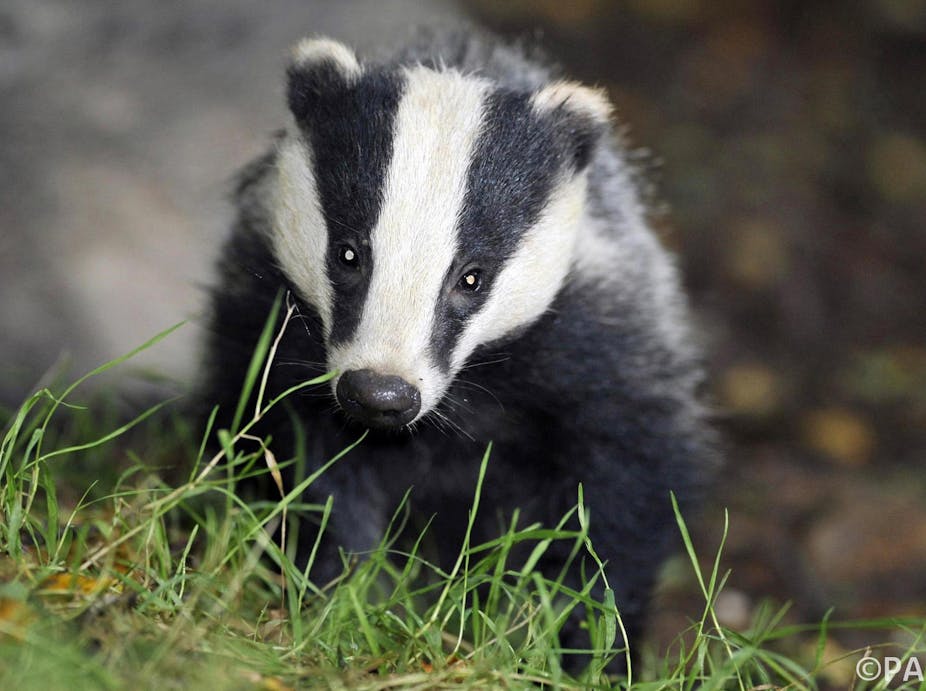What do the pilot badger culls due to start this weekend in Gloucester and West Somerset hope to achieve? The official line is a 16% reduction of bovine tuberculosis (bTB) in cattle herds over the next decade.
That figure is actually the average outcome of the Randomised Badger Culling Trial (RBCT), a carefully implemented scientific trial which ran between 1998 and 2007.
Carried out and monitored by the Independent Scientific Group on Cattle TB, badgers were trapped and shot for a few days each year, and the incidence of bTB in cattle was assessed against comparable areas where there had been no culling. In contrast, the current cull will see farmers and their contractors shoot free running badgers over a period of six weeks each year.
The justification for transferring the empirical findings from a carefully designed, monitored and implemented scientific trial to one with a different design and different method of culling is questionable.
Both sides claim their positions are supported by “the science” – but both sides use it selectively. The farming lobby rightly claim badgers are a known source of bTB infection and that culling reduces the risk to herds. The badger conservationist lobby argues that the culls cannot achieve these aims. The RBCT found that reduction of cattle infections within culled areas were to some extent counteracted by increases in neighbouring areas. This is the so-called “perturbation effect”; culling disperses the normally tight-knit and territorially stable social groups of badgers, spreading the disease more widely. Those against culling claim this will be the cull’s dominant effect, while farmers argue it will be limited by natural barriers to badger movement such as coastlines, rivers, and motorways.
Other arguments are more emotive. Conservationists assert it is morally wrong to eliminate wildlife, even over relatively limited areas, or that the method is inhumane. This is not a realistic stance to adopt in the face of an economically crippling disease. The farming lobby assert they will not eliminate badgers, but remove only 70% of local populations. Why 70%? Because that is the proportion estimated to have been culled in areas where the RBCT ran, and it’s assumed that removing the same proportion of badgers will bring the same results. They say they only wish to remove diseased animals - but as there is no test for infection, a badger can only be found to be diseased (or healthy) once killed.
The trump card used by the Department of Environment, Farming and Rural Affairs (Defra) and farmers is that “something has to be done”. Herd infections have been rising for years, with almost a quarter of all herds in the west affected, 28,000 infected cattle slaughtered in 2012 alone, and projected control costs of £1billion over the next 10 years. Obviously bTB cannot be eradicated without tackling the source of wildlife infection, but at present “eradication” is a pipe dream - merely reducing the current level would be a start. Cattle farmers argue that a 16% reduction is a good start. Badger groups argue the focus should be on dealing with the other 84% of the problem.
There are two unarguable propositions that emerge. First, whichever way you slice it badger culling is simply not economically worthwhile as a disease reduction method. Culling is a fiendishly expensive exercise and, however it is undertaken, the costs far exceed any benefits gained in terms of the value of reduced herd infections. Even Defra’s own “Impact Assessment” published when the pilot culls were first proposed demonstrated this. Shooting badgers is the cheapest option, but the substantial cost to farmers might be better spent on treating the disease if and when it occurs.
Second, bTB is primarily spread not by badgers but by cattle among the herd, and present control policies are not working. Despite regular testing of herds and of individual cattle before they are moved between farms, infection has progressively spread. The established skin test is only 75% effective and this means, especially in heavily infected herds, that one in four animals slip through undetected to re-infect others. So “something else” has to be done - to bring bTB under control, and to lower the vast government expenditure on testing and farmer compensation for the compulsory slaughter of “reactor” cattle who test postive.
The obvious alternative is vaccination. Wildlife groups advocate badger vaccination as a better alternative to culling, and a vaccine has been developed. But while it lowers the badger infection rate, the effect this has on reducing bTB is unknown. It is expensive to trap, mark and vaccinate badgers, repeatedly for each new generation - the RBCT showed that trapping and killing was prohibitively expensive. Who would pay for vaccination?
The ideal solution is of course a cattle vaccine. But there isn’t one, and any prospective vaccine is far in the future. The problem lies with an EU Directive that requires member states to have an eradication policy for bTB. Vaccination doesn’t count as eradication, and so the longstanding test-and-slaughter policy remains.
The emphasis on eradication stems from the fact that bTB - different, but similar to human tuberculosis - can nevertheless infect humans. In previous generations this was a serious problem, but universal pasteurisation of milk and inspection of carcasses in slaughterhouses eliminated that concern long ago.
It is difficult to avoid concluding that we are dealing not with a scientific problem but a political one. The previous Labour government accepted the Independent Scientific Group’s conclusion in 2007 that, all things considered, badger culling could make “no meaningful contribution to cattle TB control in Britain”. In opposition, the Conservatives promised the farming community they would reinstate culling, and those starting this weekend are the result.
Environment Secretary Owen Paterson hopes to see the cull rolled out to 40 areas across England. But compared to scientific evidence, hope has not shown itself to be a very dependable basis for disease control policy.

